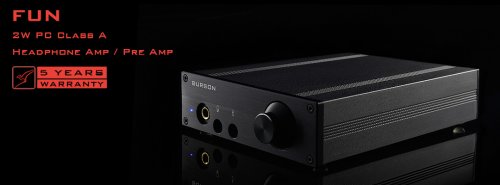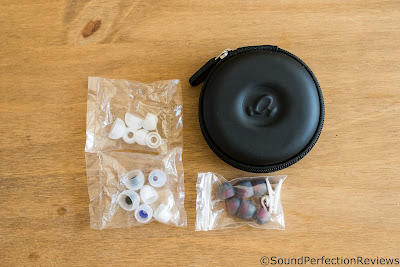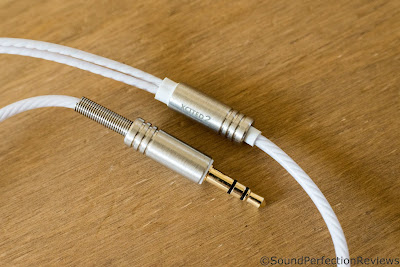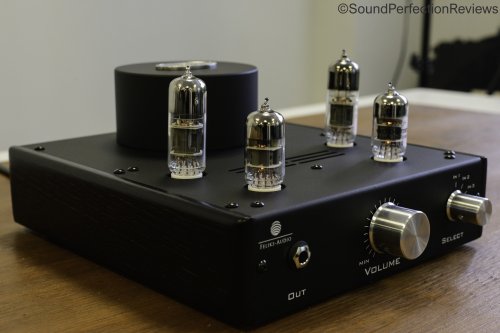Firstly, I would like to thank Burson for sending me these samples for review, they have both been used for at least 100hrs before this review was written.
*disclaimer: This sample was provided for the purpose of writing a review, no incentive was given to write a favourable review. All opinions expressed are my own subjective findings.
Gear Used: Topping D50 / JDS Labs OL DAC / JDS Labs EL DAC > Fun > Play > HE-500 / German Maestro GMP 400 / Mission Bookshelf speakers / HD820 / Clear

Tech Specs:
https://www.bursonaudio.com/products/fun/
https://www.bursonaudio.com/products/bang/
Packaging, Build Quality and Accessories:
The Bang and Fun both come in a simple black box with the product name and picture on the outside, it is very simplistic but for these products you really don’t need anything fancy. When you open up the boxes you will find the products held tightly in place by foam cut outs, all the accessories are in a separate compartment. All of it is very secure for shipping and protects the products well, along with being sleek and understated.
Both units have the same build quality, a full aluminium outer casing that is sturdy and flawlessly finished. All the inputs and outputs are sturdy and everything stacks very neatly if you want it to. The volume control on the Fun is super smooth, both units have the power switch on the back but that is only a minor inconvenience for some, and I have never found rear mounted power switches to be an issue. What I can say here really is that Burson know how to make a solid product that is built to last.
Accessory wise with the Fun you get a set of RCA cables, a jack adaptor, the power supply and a 2.5mm hex key to open it up for op-amp rolling. With the Bang you only get the power supply and 2.5mm hex key, but then again I can’t think of anything else that would be needed to get it up and running. Overall a good set of accessories with each unit, and everything you need to get set up.
Features:
So the Fun is a headphone amp / pre-amp and it also has a mic jack pass through for those gamers out there. This is a pure analogue amp that has some very impressive output power for its size and price, it’ll drive most headphones out there with ease, and the gain is fairly high so it is still more suited for full-size headphones, but it does work fine with IEM’s too. It has one set of RCA inputs, and one set of outputs that are controlled by the volume control on the front. There is a 6.3mm headphone output on the front, and a 3.5mm mic input that passes through to a 3.5mm output on the back. The mic jacks are a pass through and not affected by the amp’s internals. On the back you have the power input from either the external power supply or a 4-pin molex from a PC power supply in case you want to mount the Fun in a PC case.
The Bang is a small desktop power amplifier for passive speakers; it outputs 40w @4Ohms, 29w @8Ohms and 15.2w @16Ohms. It is also very quiet and can be used to drive hard to drive headphones with the correct banana-XLR adaptor. It is a power amp so you need a pre-amp to control the volume; there is merely a LED on the front panel to show it’s on. On the back you have the power input, a set of RCA inputs and the speaker outputs (accept bare wire, banana plugs and spades).

Sound:
The Fun is a pure Class-A headphone amp, and a powerful one at that. It comes in a small form factor but don’t let that fool you. First off, we have the stock version with the NE5543 op-amps and the Fun is a nice neutral leaning amp with plenty of detail and punch. It has so much power on tap I’ve never found myself going over 10 O’clock on the volume pot. The NE5543 is a perfectly good op-amp in the Fun, but there is still room for improvement. For starters the NE5543 may sound a little sterile to some, it lacks a little dynamism and the treble is not the most natural sounding in timbre.
Pop in the V6 Vivid op-amps and it becomes just that, more vivid. The sound is more dynamic and punchier, with kicks hitting harder but never losing control. The midrange is not affected much apart from having better layering, separation and air. The treble gains some finesse and sounds more realistic than the NE5543. The Vivid plays well with many headphones, I personally found it to work wonders with the new Sennheiser HD820 over more reference style amps. The V6 vivid is just a lot of fun to listen to.
The V6 Classic on the other hand is a little more reserved in its presentation, preferring to be a subtler and laid-back sounding op-amp. The sound is slightly less exciting and up-front but what is does have is a more balanced and even sound that is smooth and enjoyable without losing out on detail retrieval. The midrange on the V6 Vivid is not as intimate as it is on the Classic, the Classic is the one to go for if you want an expansive sound with an even balance.
The V6 Vivid is energetic and fun, the V6 Classic is more reserved and balanced.
Now on to the Bang, the sound changes between the op-amps in the Bang are less noticeable but are still there to some extent. The changes are the same as the in the Fun, with the Vivid being more fun and exciting, the V6 Classic being more even and balanced. If you are using the Fun or Play as the pre-amp you can mix and match between the units to get the right balance.
The Bang with the NE5532 is a little on the brighter sound, and does not pair very well if you have brighter leaning speakers. Saying that it will work well with warmer speakers and still has a lot of power for its size. The good thing about the Bang is that you know the specs are not inflated, they are real life power ratings.
Again, the Bang does not change as much with different op-amps but there are still subtle changes, the V6 vivid playing better with slightly more neutral speakers, bringing out a little bit of life out of them. The V6 Classic will give you a more faithful and truer to the source sound.
What surprised me about the Bang is the moment you plug it in and get it playing you will notice how much more open, spacious and detailed it is compared to similar priced integrated amps. It really is the only amp you need for a nice little bookshelf / PC setup, and it will also handle a lot of bigger speakers if you are wanting a compact amp. It does not shy away from a challenge.
The Bang is a powerful yet compact power amplifier that would be at home in both a PC based system as well as a HiFi system. If you partner it with the Play you have a remote from which you can adjust the volume, with the Fun you only have the volume pot. The Bang does not shy away from a challenge and it will do justice to many easier to driver speakers out there, it sounds a lot better than the cheaper integrated amps around the same price, the only downside is you will need a pre-amp to match the amount of inputs you need.

Conclusion: Well I can easily recommend both products, as I can the Play. You can have them as a system or separates, but they all do what they set out to do with excellence. Have a Bang and a Play and you have an all in one DAC/HP amp/power amp that will drive most headphones and a large number of speakers with ease all in a compact stack or mounted in a PC case. The Fun comes in when you want to use a separate DAC and want a slightly better headphone amp than that of the Play. Burson have launched a superb series of desktop components that all sound great and work flawlessly, with the ability to tune the sound easily with op-amps along with mount them in a PC case. Keep up the good work Burson!
Sound Perfection Rating:
Fun 8.5/10 (Solid and powerful, V6 op-amps are highly recommended)
Bang 8.5/10 (superb power amp, V6 op-amps are again highly recommended)
*disclaimer: This sample was provided for the purpose of writing a review, no incentive was given to write a favourable review. All opinions expressed are my own subjective findings.
Gear Used: Topping D50 / JDS Labs OL DAC / JDS Labs EL DAC > Fun > Play > HE-500 / German Maestro GMP 400 / Mission Bookshelf speakers / HD820 / Clear

Tech Specs:
https://www.bursonaudio.com/products/fun/
https://www.bursonaudio.com/products/bang/
Packaging, Build Quality and Accessories:
The Bang and Fun both come in a simple black box with the product name and picture on the outside, it is very simplistic but for these products you really don’t need anything fancy. When you open up the boxes you will find the products held tightly in place by foam cut outs, all the accessories are in a separate compartment. All of it is very secure for shipping and protects the products well, along with being sleek and understated.
Both units have the same build quality, a full aluminium outer casing that is sturdy and flawlessly finished. All the inputs and outputs are sturdy and everything stacks very neatly if you want it to. The volume control on the Fun is super smooth, both units have the power switch on the back but that is only a minor inconvenience for some, and I have never found rear mounted power switches to be an issue. What I can say here really is that Burson know how to make a solid product that is built to last.
Accessory wise with the Fun you get a set of RCA cables, a jack adaptor, the power supply and a 2.5mm hex key to open it up for op-amp rolling. With the Bang you only get the power supply and 2.5mm hex key, but then again I can’t think of anything else that would be needed to get it up and running. Overall a good set of accessories with each unit, and everything you need to get set up.
Features:
So the Fun is a headphone amp / pre-amp and it also has a mic jack pass through for those gamers out there. This is a pure analogue amp that has some very impressive output power for its size and price, it’ll drive most headphones out there with ease, and the gain is fairly high so it is still more suited for full-size headphones, but it does work fine with IEM’s too. It has one set of RCA inputs, and one set of outputs that are controlled by the volume control on the front. There is a 6.3mm headphone output on the front, and a 3.5mm mic input that passes through to a 3.5mm output on the back. The mic jacks are a pass through and not affected by the amp’s internals. On the back you have the power input from either the external power supply or a 4-pin molex from a PC power supply in case you want to mount the Fun in a PC case.
The Bang is a small desktop power amplifier for passive speakers; it outputs 40w @4Ohms, 29w @8Ohms and 15.2w @16Ohms. It is also very quiet and can be used to drive hard to drive headphones with the correct banana-XLR adaptor. It is a power amp so you need a pre-amp to control the volume; there is merely a LED on the front panel to show it’s on. On the back you have the power input, a set of RCA inputs and the speaker outputs (accept bare wire, banana plugs and spades).

Sound:
The Fun is a pure Class-A headphone amp, and a powerful one at that. It comes in a small form factor but don’t let that fool you. First off, we have the stock version with the NE5543 op-amps and the Fun is a nice neutral leaning amp with plenty of detail and punch. It has so much power on tap I’ve never found myself going over 10 O’clock on the volume pot. The NE5543 is a perfectly good op-amp in the Fun, but there is still room for improvement. For starters the NE5543 may sound a little sterile to some, it lacks a little dynamism and the treble is not the most natural sounding in timbre.
Pop in the V6 Vivid op-amps and it becomes just that, more vivid. The sound is more dynamic and punchier, with kicks hitting harder but never losing control. The midrange is not affected much apart from having better layering, separation and air. The treble gains some finesse and sounds more realistic than the NE5543. The Vivid plays well with many headphones, I personally found it to work wonders with the new Sennheiser HD820 over more reference style amps. The V6 vivid is just a lot of fun to listen to.
The V6 Classic on the other hand is a little more reserved in its presentation, preferring to be a subtler and laid-back sounding op-amp. The sound is slightly less exciting and up-front but what is does have is a more balanced and even sound that is smooth and enjoyable without losing out on detail retrieval. The midrange on the V6 Vivid is not as intimate as it is on the Classic, the Classic is the one to go for if you want an expansive sound with an even balance.
The V6 Vivid is energetic and fun, the V6 Classic is more reserved and balanced.
Now on to the Bang, the sound changes between the op-amps in the Bang are less noticeable but are still there to some extent. The changes are the same as the in the Fun, with the Vivid being more fun and exciting, the V6 Classic being more even and balanced. If you are using the Fun or Play as the pre-amp you can mix and match between the units to get the right balance.
The Bang with the NE5532 is a little on the brighter sound, and does not pair very well if you have brighter leaning speakers. Saying that it will work well with warmer speakers and still has a lot of power for its size. The good thing about the Bang is that you know the specs are not inflated, they are real life power ratings.
Again, the Bang does not change as much with different op-amps but there are still subtle changes, the V6 vivid playing better with slightly more neutral speakers, bringing out a little bit of life out of them. The V6 Classic will give you a more faithful and truer to the source sound.
What surprised me about the Bang is the moment you plug it in and get it playing you will notice how much more open, spacious and detailed it is compared to similar priced integrated amps. It really is the only amp you need for a nice little bookshelf / PC setup, and it will also handle a lot of bigger speakers if you are wanting a compact amp. It does not shy away from a challenge.
The Bang is a powerful yet compact power amplifier that would be at home in both a PC based system as well as a HiFi system. If you partner it with the Play you have a remote from which you can adjust the volume, with the Fun you only have the volume pot. The Bang does not shy away from a challenge and it will do justice to many easier to driver speakers out there, it sounds a lot better than the cheaper integrated amps around the same price, the only downside is you will need a pre-amp to match the amount of inputs you need.

Conclusion: Well I can easily recommend both products, as I can the Play. You can have them as a system or separates, but they all do what they set out to do with excellence. Have a Bang and a Play and you have an all in one DAC/HP amp/power amp that will drive most headphones and a large number of speakers with ease all in a compact stack or mounted in a PC case. The Fun comes in when you want to use a separate DAC and want a slightly better headphone amp than that of the Play. Burson have launched a superb series of desktop components that all sound great and work flawlessly, with the ability to tune the sound easily with op-amps along with mount them in a PC case. Keep up the good work Burson!
Sound Perfection Rating:
Fun 8.5/10 (Solid and powerful, V6 op-amps are highly recommended)
Bang 8.5/10 (superb power amp, V6 op-amps are again highly recommended)






















































































































